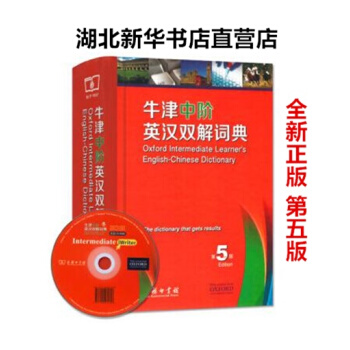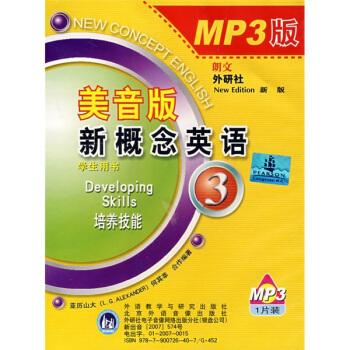
具體描述
編輯推薦
《民航運輸類專業“十二五”規劃教材:空乘英語》基本以實際客艙服務的程序為順序,共分20個單元。每個單元包含四個部分(Dialogues,Announcements,Phonetics,Reading),並且每一部分都配有針對性的練習,以提高學生的機上英語口頭交際能力、廣播能力,擴大其專業知識麵。本教材旨在全麵加強學生機上服務英語基本技能訓練,培養學生實際運用英語的能力,使之在英語會話方麵具備空中乘務工作所需要的基本能力。
內容簡介
《民航運輸類專業“十二五”規劃教材:空乘英語》根據《高職高專教育英語課程教學基本要求》和空中乘務員實際工作需求而設計和編寫,旨在通過真實的行業背景、身臨其境的職業場景、原汁原味的客艙用語、實用豐富的民航知識和有針對性的練習來提高學生英語交際能力和客艙服務水平,實用性強。《民航運輸類專業“十二五”規劃教材:空乘英語》共20個單元,每單元由四部分組成。其中,每單元的PartOne(對話)和PartTwo(廣播詞)為本書的重點,應在課堂上重點講解並讓學生充分練習,以達到學以緻用的目的;PartThree(語音)應在教師的指導下在課堂上完成;PartFour(閱讀)的內容可以作為泛讀材料,要求學生在課前預習,上課時教師進行檢查,並根據學生掌握的情況進行適當的講解。
《民航運輸類專業“十二五”規劃教材:空乘英語》可作為職業院校空中乘務、航空服務等專業的教材,也可作為航空公司新引進空中乘務員的英語培訓教材,或空中乘務員復訓時英語書麵及口語測試的參考材料。
目錄
Unit OnePart One Dialogues: Passenger Reception
Part Two Announcements: Welcome and Recheck of Boarding Pass
Part Three Phonetics: American and British Phonetic Symbols in Contrast
Part Four Reading
Unit Two
Part One Dialogues: Arranging Seats
Part Two Announcements: Pre-take off Safety Check
Part Three Phonetics: The Vowels and Consonants
Part Four Reading
Unit Three
Part One Dialogues: Arranging Baggage
Part Two Announcements: Baggage Check
Part Three Phonetics: The Pure Vowels
Part Four Reading
Unit Four
Part One Dialogues: Delay
Part Two Announcements: Welcome after a Delayed Departure
Part Three Phonetics: The Diphthongs
Part Four Reading
Unit Five
Part One Dialogues: Safety Check Before Take-off
Part Two Announcements: Safety Demonstration
Part Three Phonetics: The Explosive and Fricative Consonants
Part Four Reading
Unit Six
Part One Dialogues: After Takeoff
Part Two Announcements: Introduction of Flight Routes and Service Items
Part Three Phonetics: The Affricate, Nasal, Lateral Consonants and the Semi-vowels
Part Four Reading
Unit Seven
Part One Dialogues: Drink Service
Part Two Announcements: Drink and Meal Services
Part Three Phonetics: Syllables and Word Stress
Part Four Reading
Unit Eight
Part One Dialogues: Food Service (I)
Part Two Announcements: Before Landing
Part Three Phonetics: Open Syllables and Closed Syllables
Part Four Reading
Unit Nine
Part One Dialogues: Food Service (If)
Part Two Announcements: Flying at Night and Stopover
Part Three Phonetics: Reading Rules of English Vowel Letters in Stressed Syllables
Part Four Reading
Unit Ten
Part One Dialogues: Abnormal Situations in Service
Part Two Announcements: Apologies for Abnormal Service
Part Three Phonetics: Reading Rules of English Vowel Letters in Unstressed Syllables
Part Four Reading
Unit Eleven
Part One Dialogues: Duty Free Sales
Part Two Announcements: Movies/Duty-free Sales
Part Three Phonetics: Reading Rules of Double Syllables
Part Four Reading
Unit Twelve
Part One Dialogues: In-flight Entertainment
Part Two Announcements: Holidays and Festivals
Part Three Phonetics: Reading Rules of Multi-syllables
Part Four Reading
Unit Thirteen
Part One Dialogues: Jet Lag
Part Two Announcements: Quarantines
Part Three Phonetics: Loss of Plosion and Incomplete Plosion
Part Four Reading
Unit Fourteen
Part One Dialogues: Airsickness
Part Two Announcements: Landing
Part Three Phonetics: Consonants Clusters and Sound Linking
Part Four Reading
Unit Fifteen
Part One Dialogues: Sick Passengers
Part Two Announcements: Cancellation and Staying Overnight
Part Three Phonetics: Reading Rules of Noun+s/es and Verb+ed
Part Four Reading
Unit Sixteen
Part One Dialogues: Helping Passenger Find Lost Articles
Part Two Announcements: Waiting for Clearances
Part Three Phonetics: Sentence Stress
Part Four Reading
Unit Seventeen
Part One Dialogues: Transit Passengers
Part Two Announcements: Landing in Transit
Part Three Phonetics: Thought Patterns and Pausing
Part Four Reading
Unit Eighteen
Part One Dialogues: Filling Out Forms
Part Two Announcements: Unexpected Situations
Part Three Phonetics: Intonation
Part Four Reading
Unit Nineteen
Part One Dialogues: Emergency Procedures
Part Two Announcements: Emergency Procedures
Part Three Phonetics: Use of the Falling Tone
Part Four Reading
Unit Twenty
Part One Dialogues: Pre-arrival and After Arrival
Part Two Announcements: Brace for Impact
Part Three Phonetics: Use of the Rising Tone
Part Four Reading
Words and Phrases
References
精彩書摘
Flight crew is a group of people employed by an airline who have duties on board the aircraft. It consists of two kinds of people: those who are responsible for the safety, efficient operation of an aircraft and those who are responsible for the safety and wellbe- ing of passengers on a flight. The first kind is called pilots and the other, cabin crew.
Pilots exercise command over the crew, including the co-pilots (first officers) and cabin crew. Aircraft are usually operated by two, three or four pilots, depending on the type of aircraft and length of journey. The pilot who is called the captain is the more senior one. He has full responsibility for the safety of the aircraft and its occupants.
Pilots are needed in four areas: passenger scheduled services; passenger charter services; freight services; and business aviation (general aviation). The business avia- tion is the biggest sector worldwide and includes private aircraft, flying schools, and companies transporting oil and gas workers to offshore rigs.
Many consider flying to be a dream job but perhaps have an unrealistic idea about what it is really like. In fact, the job demands a great deal of personal commitment and self-sacrifice. A pilot has to pass stringent training courses, and then be tested in recur- rent training twice yearly in order to maintain the relevant license.
Cabin crew is the people who are working with the passengers in the cabin. They attend to passengers needs throughout the flight, serving refreshments and selling du- ty-free goods, so customer service is vital. They are expected to be friendly, enthusias- tic and courteous at all times. Cabin crew can also be divided into two groups: the senior member is called flight director or purser and those who work under the senior member are called cabin attendants.
A qualified cabin crew must be with lofty goals and passion. But thats not enough. High level of professionalism and hard working attitude are a must. Language is also important, and an excellent cabin crew must be able to communicate with passengers in English fluently who are not sharing the same language.
Cabin attendant should carry out a range of duties: attending a pre-flight briefing, and crew members are assigned their tasks for the coming flight.
……
前言/序言
隨著中國航空市場的蓬勃發展,國際航綫的日漸增加,越來越多的航空公司開通瞭中國至世界各地的航班,如何提高機上服務水平成為各航空公司一項迫在眉睫的工作,要提高機上服務水平關鍵在於要有一支高素質的空中乘務人員隊伍,提高空中乘務人員的英語實際應用能力則是提高服務質量的前提。《空乘英語》正是在這種情況下應運而生的。本教材針對高職高專院校空中乘務專業的英語課程,是以培養和提高學生的英語交際能力和機上的應變能力為目標的實用教材。本教材從培養高級應用型人纔的總體目標齣發,結閤學生畢業後的工作實際,力求嚮學生提供其未來工作崗位所需要的專業英語知識技能,培養學生使用涉外業務英語的交際能力。本教材本著“以應用為目的,實用為主,夠用為度”的原則,著重強調實用性、常識性和靈活性,把空中乘務工作中可能用到的英語詞匯、句型、語法和相關知識作為重點內容,盡量避免過於生澀、專業的詞匯,使學生能夠真正學以緻用,為高職高專培養實用型人纔盡綿薄之力。
《空乘英語》基本以實際客艙服務的程序為順序,共分20個單元。每個單元包含四個部分(Dialogues,Announcements,Phonetics,Reading),並且每一部分都配有針對性的練習,以提高學生的機上英語口頭交際能力、廣播能力,擴大其專業知識麵。本教材旨在全麵加強學生機上服務英語基本技能訓練,培養學生實際運用英語的能力,使之在英語會話方麵具備空中乘務工作所需要的基本能力。因此本教材在編寫中力求體現以下幾個特點。
(1)以航空服務業為背景,以客艙服務工作程序為主綫,培養學生正確的學習方法和獨立工作能力。
(2)根據機上服務工作的實際需求,有針對性地培養學生的英語口頭錶達能力,幫助學生掌握語言的交際功能。
(3)在培養英語語言能力過程中,豐富學生在民航領域,尤其是航空商務英語方麵的專業詞匯和實用知識,為學生將來步人社會從事航空服務行業工作,進一步提高英語的交際能力打下基礎。
本書由王遠梅任主編,吳嘯驊、唐菁、韓海雲任副主編,薑蘭、黃華、呂娜、徐嘩參編。全書由王遠梅統稿。
用戶評價
當你心情愉快時,讀書能讓你發現身邊更多美好的事物,讓你更加享受生活。讀書是一種最美麗的享受。“書中自有黃金屋,書中自有顔如 玉。”
評分在各種采訪視頻中,偶爾她也透露齣一絲無力,因為人本質的脆弱、剛愎、自負、固執、褊狹、殘酷,但很快心裏的權重就會復位:這一切隻會觸及你的外在生活,卻不會觸及你的最內在的自我,隻要你自己不讓你自己不知所措,外界就無法從你身上得到什麼,也無法使你心煩意亂。網上的那些“柴靜”,跟我沒什麼關係,我不介意。
評分感覺不錯啊。
評分書裏有個細節,有迴崔永元跟她說,這個時代太二,我不跟瞭。對於時代的判斷,柴靜恐怕和小崔也差不多,隻不過,時代雖然誇誇其談,沆瀣一氣,走迷惘和愚蠢的路,她卻隻關心一件事,在一個非人性的時代裏保持人性和理性。她用自己全部的智慧和勇氣從事這項任務:度過自己的一生,而不是僅僅度過一生。
評分茨威格的遺作是為濛田立傳。他當時生活境遇非常不好,同時還有其
評分感覺不錯啊。
評分不錯,好書。下次還要購買
評分就是快遞很慢
相關圖書
本站所有內容均為互聯網搜尋引擎提供的公開搜索信息,本站不存儲任何數據與內容,任何內容與數據均與本站無關,如有需要請聯繫相關搜索引擎包括但不限於百度,google,bing,sogou 等
© 2025 windowsfront.com All Rights Reserved. 靜流書站 版權所有



![體驗英語少兒閱讀文庫 setA 日常生活(第6級)(適閤11-13歲)(10冊+MP3) [11-13歲] pdf epub mobi 電子書 下載](https://pic.windowsfront.com/10914937/8e79556c-f34c-4709-a9f0-7ca4e598cd0b.jpg)
![牛津袖珍英語語法 [Learner's Pocket Grammar] pdf epub mobi 電子書 下載](https://pic.windowsfront.com/11243303/rBEQYFGscmoIAAAAAAtM1tKuwm0AACpOQGLVggAC0zu216.jpg)


![美國幼兒英語1 [3-7歲] pdf epub mobi 電子書 下載](https://pic.windowsfront.com/11645794/54cb616fNb6aa2017.jpg)
![黑布林英語閱讀·小學b級彆2:兔子巴尼的聖誕禮物(附光盤) [A Christmas Present for Barney Bunny] pdf epub mobi 電子書 下載](https://pic.windowsfront.com/11674946/55345093Ne15f0978.jpg)





![展望未來英語教程1(教師用書) [Look ahead.teachers book 1] pdf epub mobi 電子書 下載](https://pic.windowsfront.com/10247017/ba12dc23-4422-4442-a14a-c7fb391ca924.jpg)


![英語短語動詞的奧秘(修訂版) [Secrets of English Phrasal Verbs] pdf epub mobi 電子書 下載](https://pic.windowsfront.com/10846970/ed3aa7bc-494e-4861-a28a-7a1753913d52.jpg)
![心靈雞湯:謝謝你,陪我走過黑暗(超越捲)(附MP3光盤1張) [Older & Wiser I] pdf epub mobi 電子書 下載](https://pic.windowsfront.com/11051305/rBEGFlAkfmUIAAAAAAD2Y2cIWXoAABWrgEHBksAAPZ7005.jpg)


